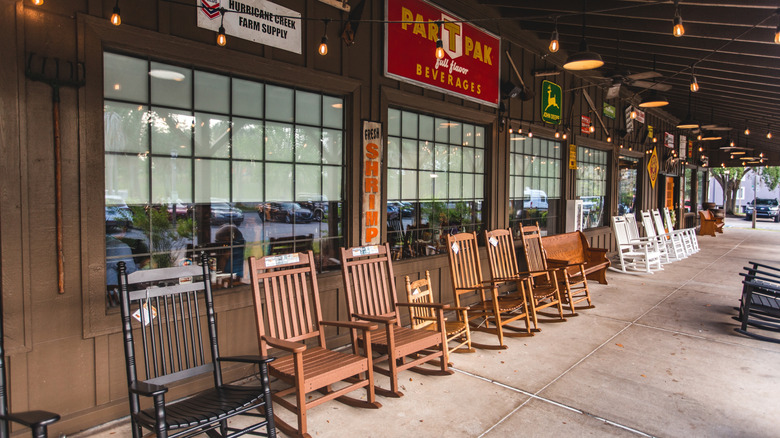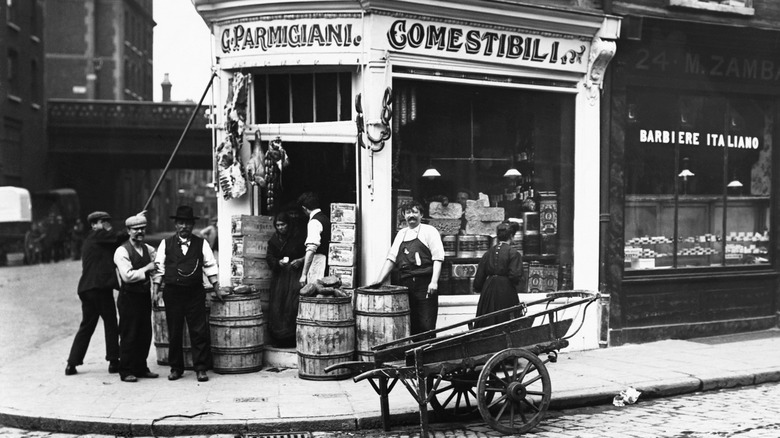How Cracker Barrel Got Its Nostalgic Name
Just about everything in our fast-paced, digital, modern lives looks vastly different from the way people lived a hundred years ago. Certainly, the way we shop for food and gather around it has dramatically changed. One store looking to tap into nostalgia for days gone by is Cracker Barrel, the longtime favorite pit stop for travelers in search of comfort food classics and a chance to stretch their legs. With the official full name of Cracker Barrel Old Country Store, this establishment gets its quaint-sounding name from a once-common fixture in the old-fashioned general stores it's modeled after.
These stores, also called trading posts, could be found in every town and served as more than just a place to buy staples, but also as a community gathering spot. Before the rise of highways and the modern supermarket (like this still-operating grocery chain, which was the very first), everyone would shop and socialize at these all-purpose hubs. Commonly found in these stores in the 19th century were barrels of soda crackers, which would be repurposed when empty and used as tables to socialize around. Cracker Barrel may now be better known for its iconic gift shop and Country Fried Chicken, but the barrels it was named after were once a staple in the old-time general stores the chain seeks to recreate.
Barrels have traditionally been used for food storage
The history of barrels and food storage actually goes way back, with most food and beverages packaged, stored, and sold in wood barrels up until the 1900s. In old-fashioned general stores, barrels certainly would have been a common sight, where they were used to store all sorts of foodstuffs from alcohol to dry goods. While Cracker Barrel doesn't use wood barrels to store food, you'll always find one on every restaurant's front patio. The barrel represents the simple joys in life, like gathering to share stories and connect with others.
When founder Dan Evins opened the first Cracker Barrel in 1969, he did so to push back against the rise of fast food dining, which was prioritizing efficiency over connection and community. With every choice he made about his restaurant — from the old-fashioned menu items to the name — he hoped to give modern drivers a dose of the nostalgic old-fashioned stores he grew up with.
So next time you're on a road trip or simply craving some good cheese grits or biscuits, keep an eye out for the rustic Cracker Barrel logo on the exit signs. Armed with this kernel of historical lore, you'll have one more reason to appreciate a visit to the iconic country store chain.

